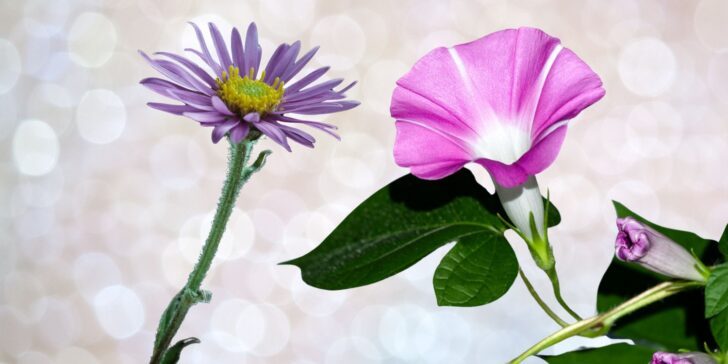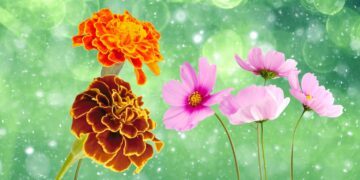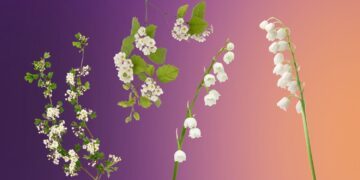September babies are fortunate to claim asters and morning glories as their birth flowers.
Asters dazzle with their star-shaped blooms, symbolizing love and wisdom, while morning glories captivate with their heart-shaped leaves and fleeting beauty.
Beyond their aesthetic appeal, these flowers carry rich histories and deep cultural meanings.
So, join us as we explore the intriguing facts that showcase why asters and morning glories are so beloved.
10 Facts About Asters
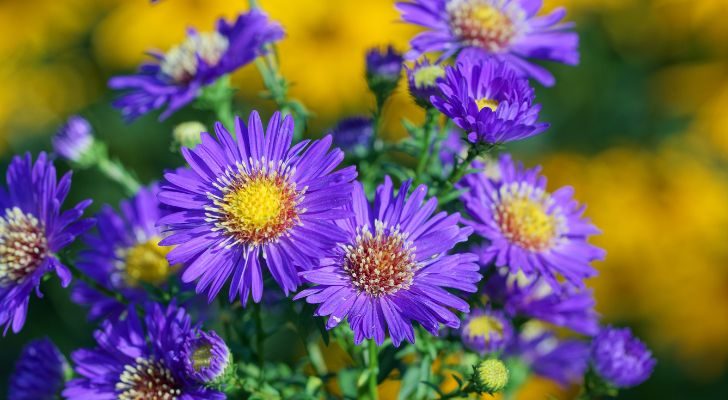
Aster flowers are part of the Asteraceae family, which includes around 170 species. These flowers are primarily found in Eurasia, the combined continental landmass of Europe, and Asia.
In Hinduism, Aster flowers represent strength, faith, and hope. They’re also used during Diwali for decorations and rituals, symbolizing triumph over evil.
While aster flowers are generally non-toxic, they can still cause minor stomach irritation in humans and animals. The only exception is woody aster flowers, which are poisonous due to their high levels of selenium.
The North American Aster species, like the New York aster (Symphyotrichum novi-belgii), has medicinal uses. Native Americans historically used it to treat a range of health problems, such as boils, snake bites, and fever.
The name “aster” is derived from the Ancient Greek word ἀστήρ, meaning “star,” highlighting the star-shaped appearance of the flower’s bloom.
Aster flowers are also called Michaelmas daisies because they bloom around Michaelmas Day, a Christian festival celebrated on September 29, honoring St. Michael the Archangel.
The size of aster flowers can typically grow 1 to 6 feet (0.3-.8 meters) tall and 1 to 4 feet (0.3-1.2 m) wide.
Aster flowers bloom in pink, red, white, lilac, and mauve. In Greek mythology, they symbolized love and were placed on altars for the gods.
Protesters in Budapest wore Aster flowers during the Hungarian Revolution on October 31, 1918, which led to it being dubbed the “Aster Revolution.”
According to Greek legend, Aster flowers were formed from the tears of the Greek goddess Astraea, who wept when she saw no stars in the sky.
10 Facts About Morning Glories
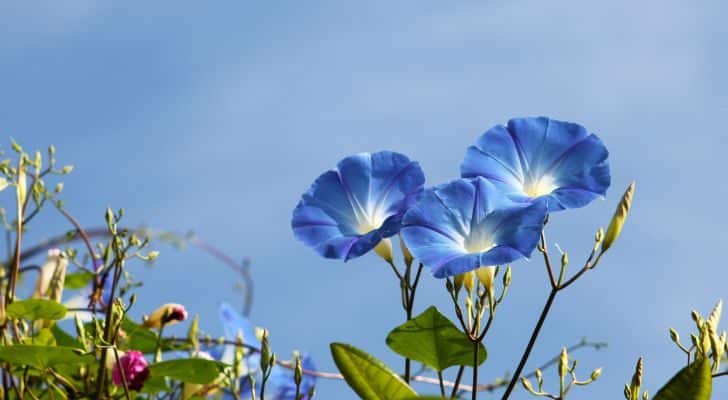
Morning glories are self-seeding. This means they drop seeds after blooming, which then germinate and grow into new plants without needing replanting.
The morning glory flower got its name because its blooms open in the morning and fade by evening.
For Native American tribes like the Hopi, morning glories embody spirituality and act as messengers between the physical and spiritual realms. They also symbolize the cycle of life, death, and rebirth.
Morning glories are climber flowers, which grow by wrapping around tall objects, like trees or walls, using their stems to climb and spread.
Morning glories belong to the Convolvulaceae family. It has numerous genera, but the largest one is Ipomoea. In total, these flowers have more than 1,000 species!
Some morning glories, like the moonflower (Ipomoea alba) and the lavender moonvine (Ipomoea muricata), are nocturnal, meaning they bloom at night instead of during the day.
Morning glories grow around 6 to 12 feet (1.8-3.7 meters) tall and spread about 3 to 6 feet (0.9-1.8 m) wide, making them great for covering trellises and fences.
The leaves of morning glories are heart-shaped, explaining why countries like China and Japan use them as symbols of love.
Morning glories are known as Asagao in Japan. Due to their short lifespan, they’re associated with the concept of life’s impermanence and the importance of embracing the present moment.
Morning glory species like hedge bindweed (Calystegia sepium) and blue morning glory (Ipomoea purpurea) are invasive in parts of the US, leading to restrictions on their cultivation and sale due to their impact on crops, especially cotton.
Asters and morning glories are two distinct but equally fascinating flowers.
Both vibrant flowers hold symbolic meanings in various cultures and have unique characteristics, such as Asters’ star-shaped blossoms and Morning Glories’ ability to self-seed.
With those characteristics in mind, there’s no doubt that these flowers perfectly represent September babies, who are born to be stars and are self-reliant.
So, whether you’re celebrating a birthday in September or simply intrigued by botanical wonders, learning about these flowers offers a deeper appreciation for the natural world!

